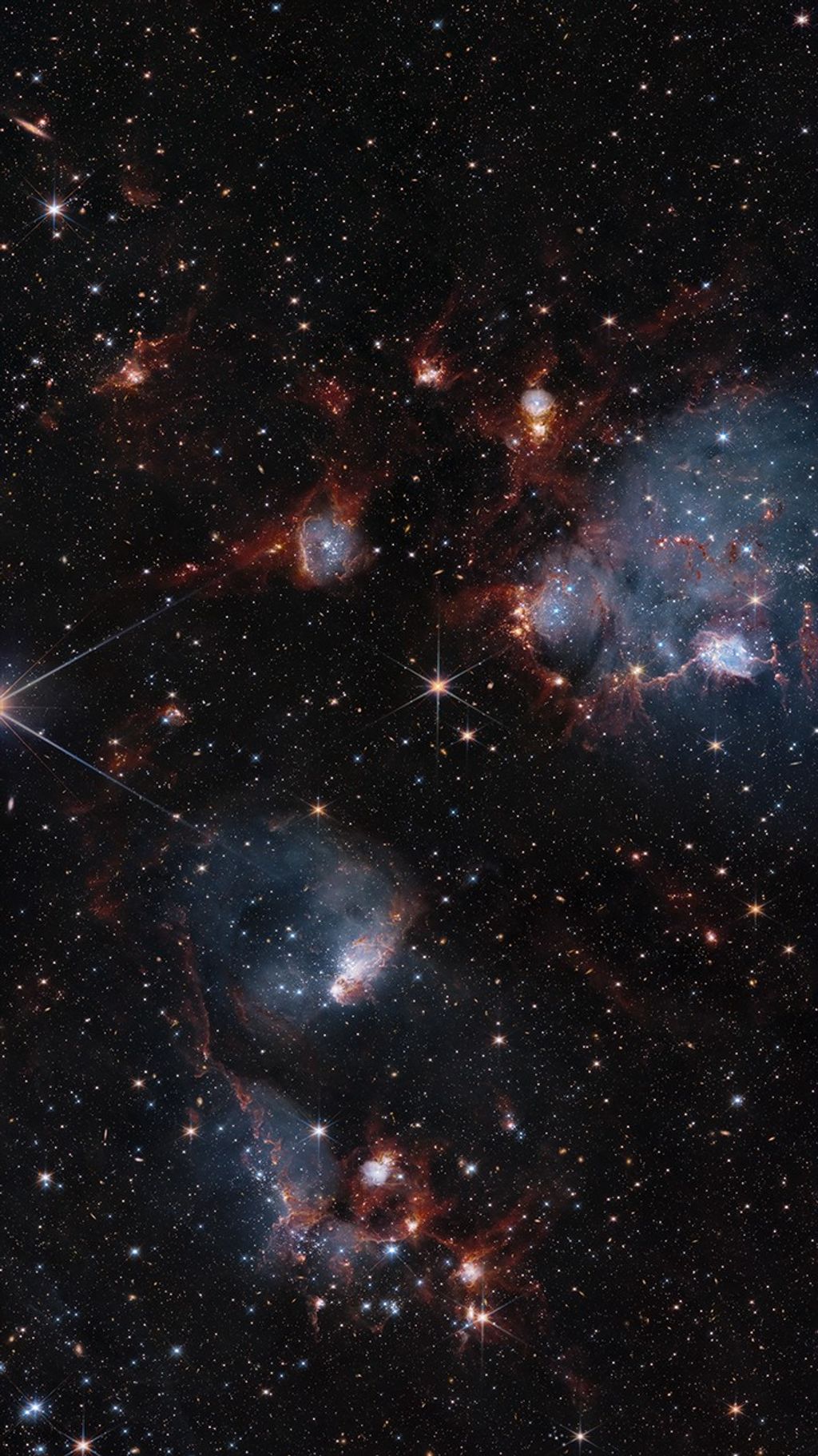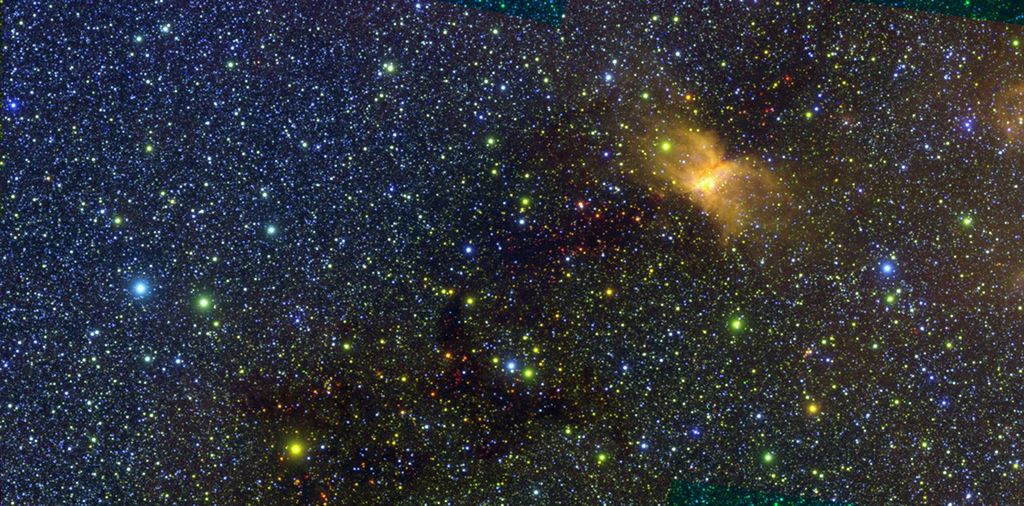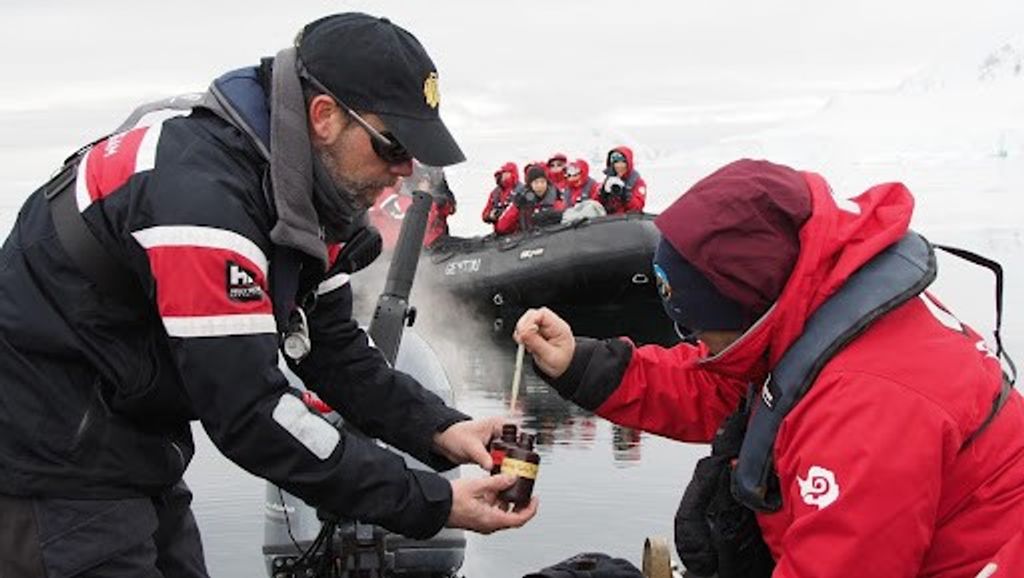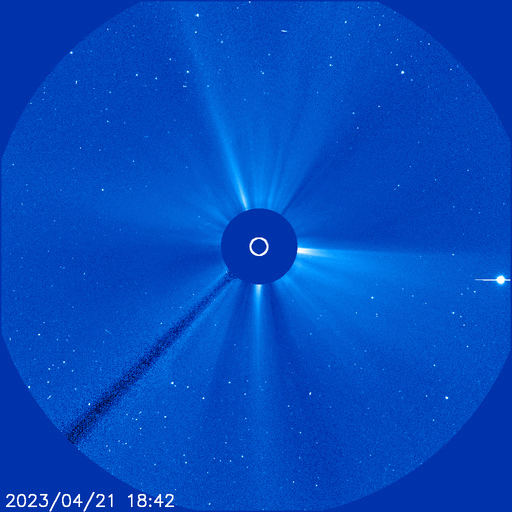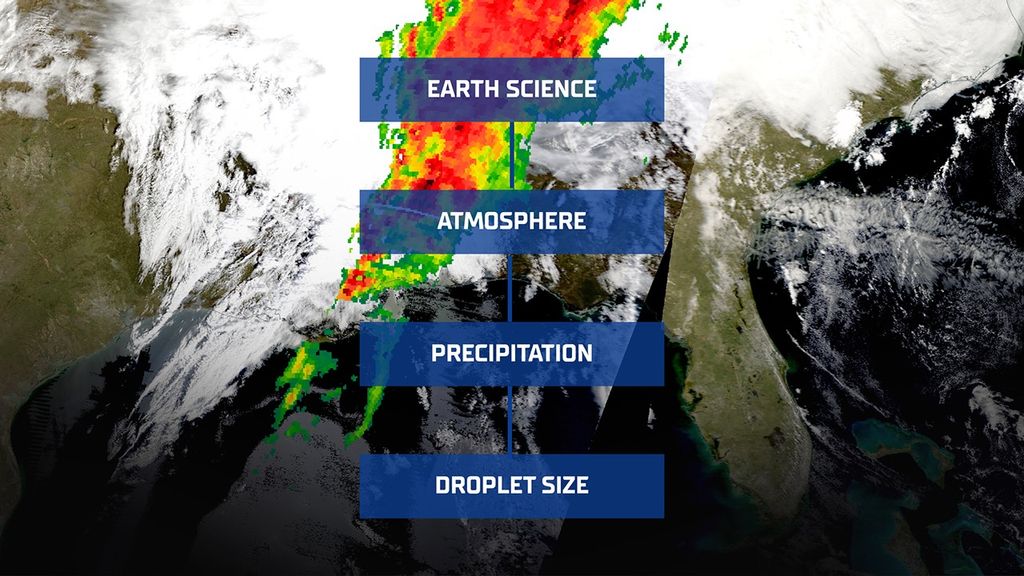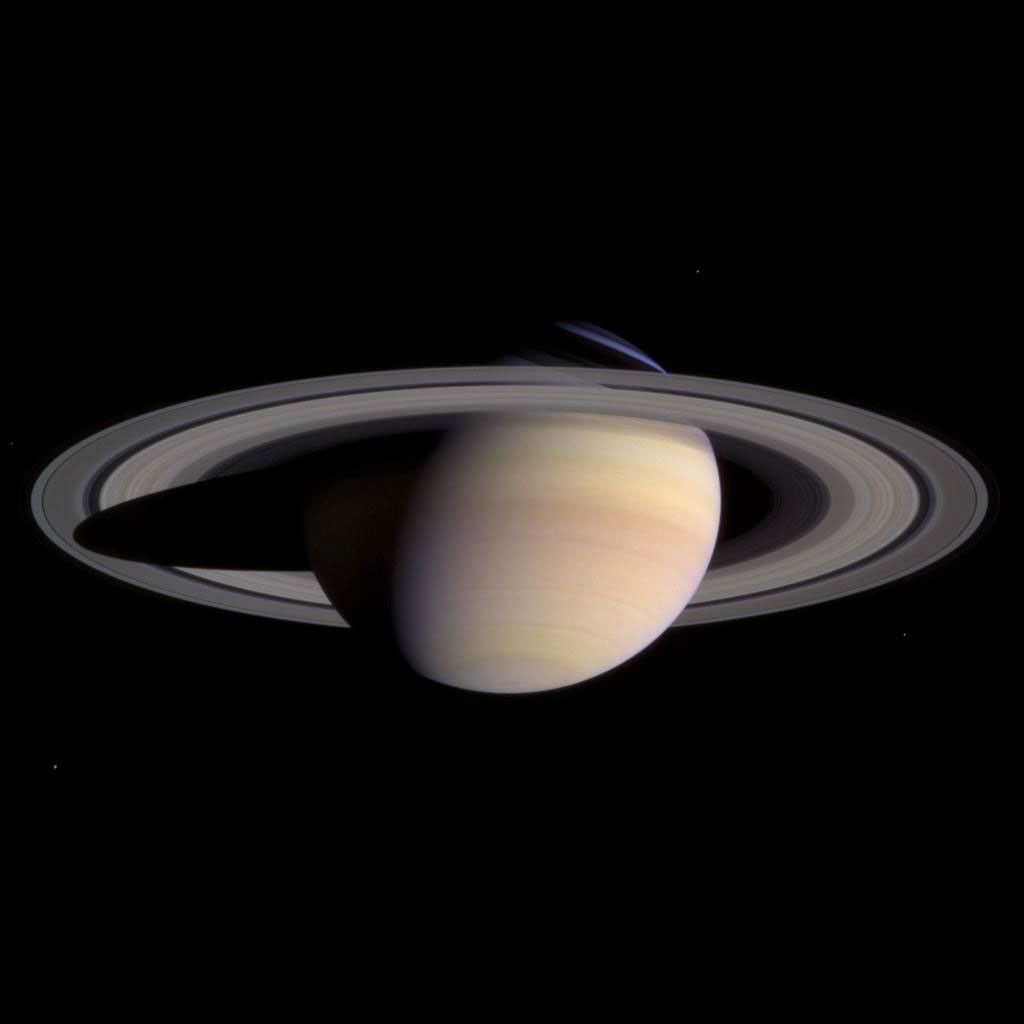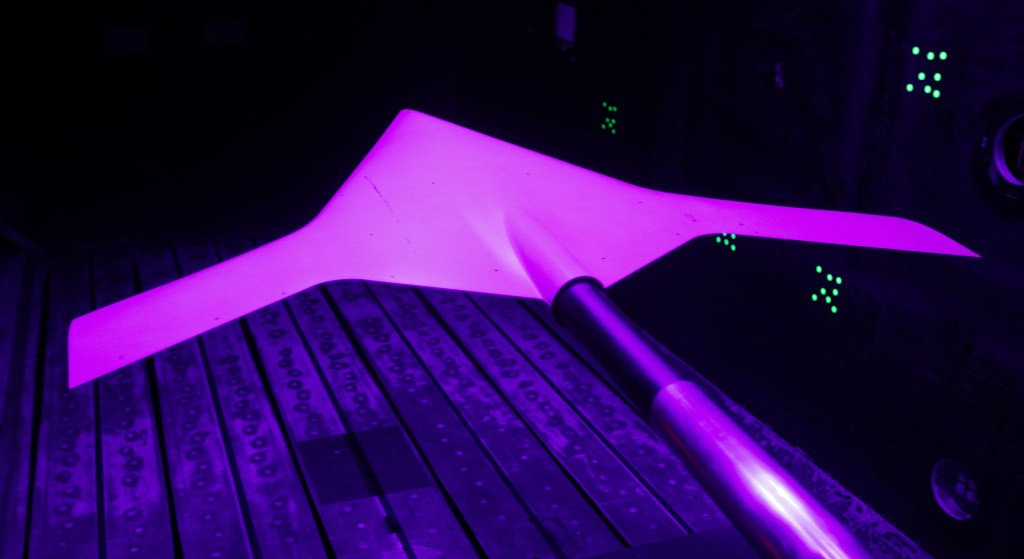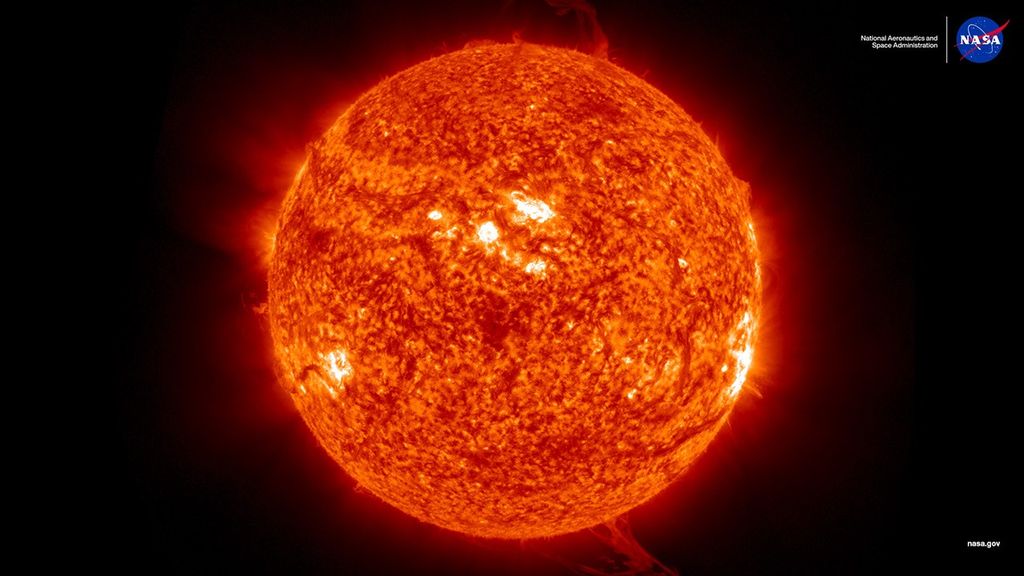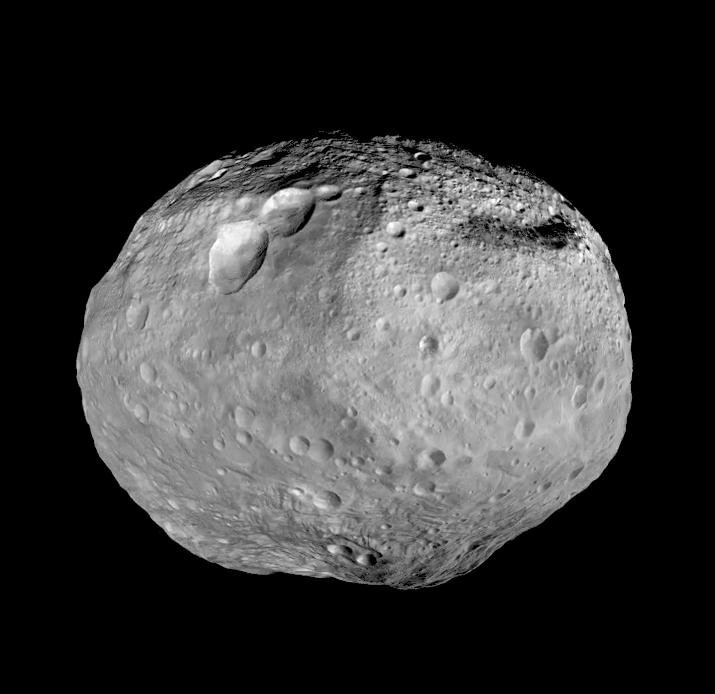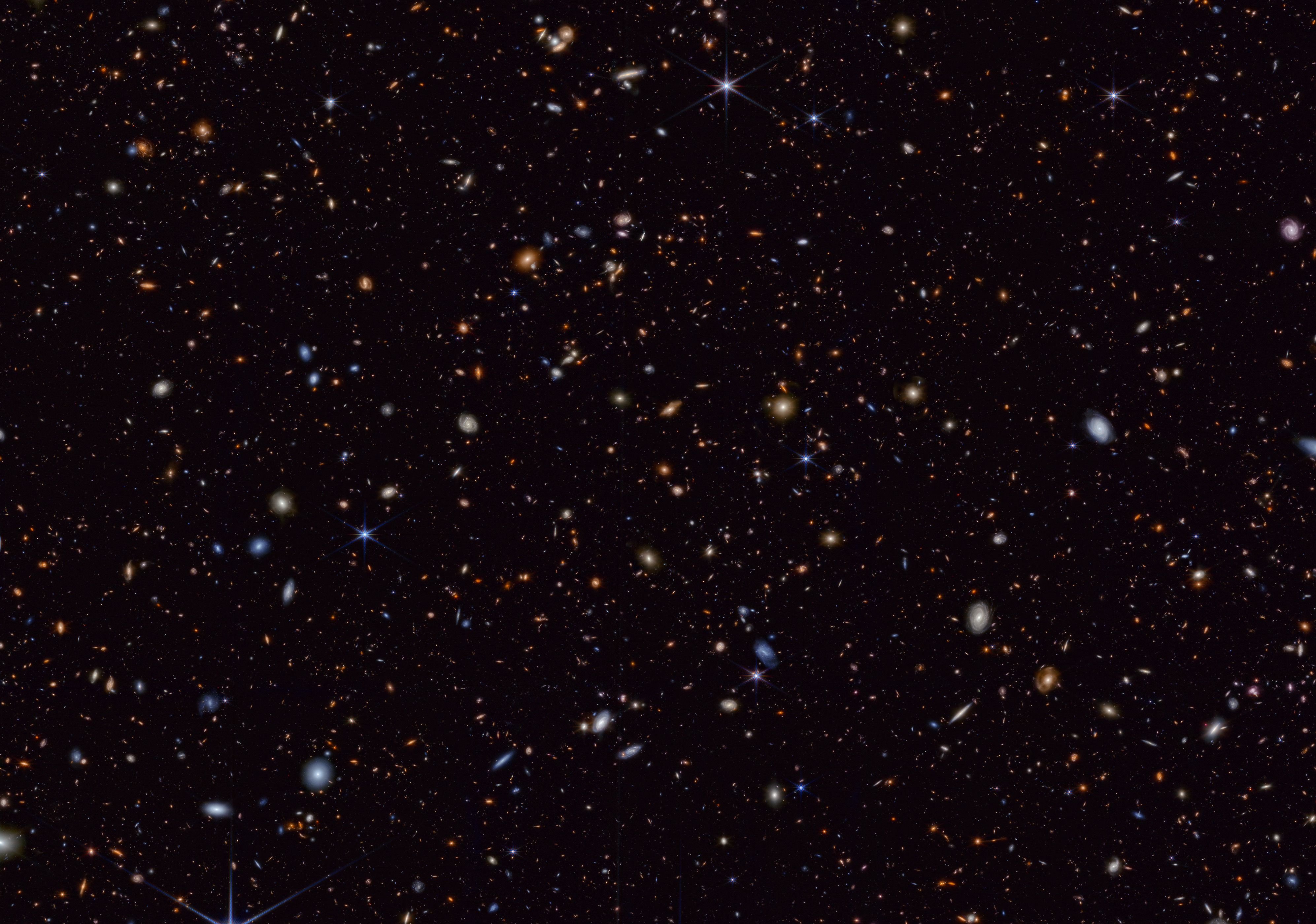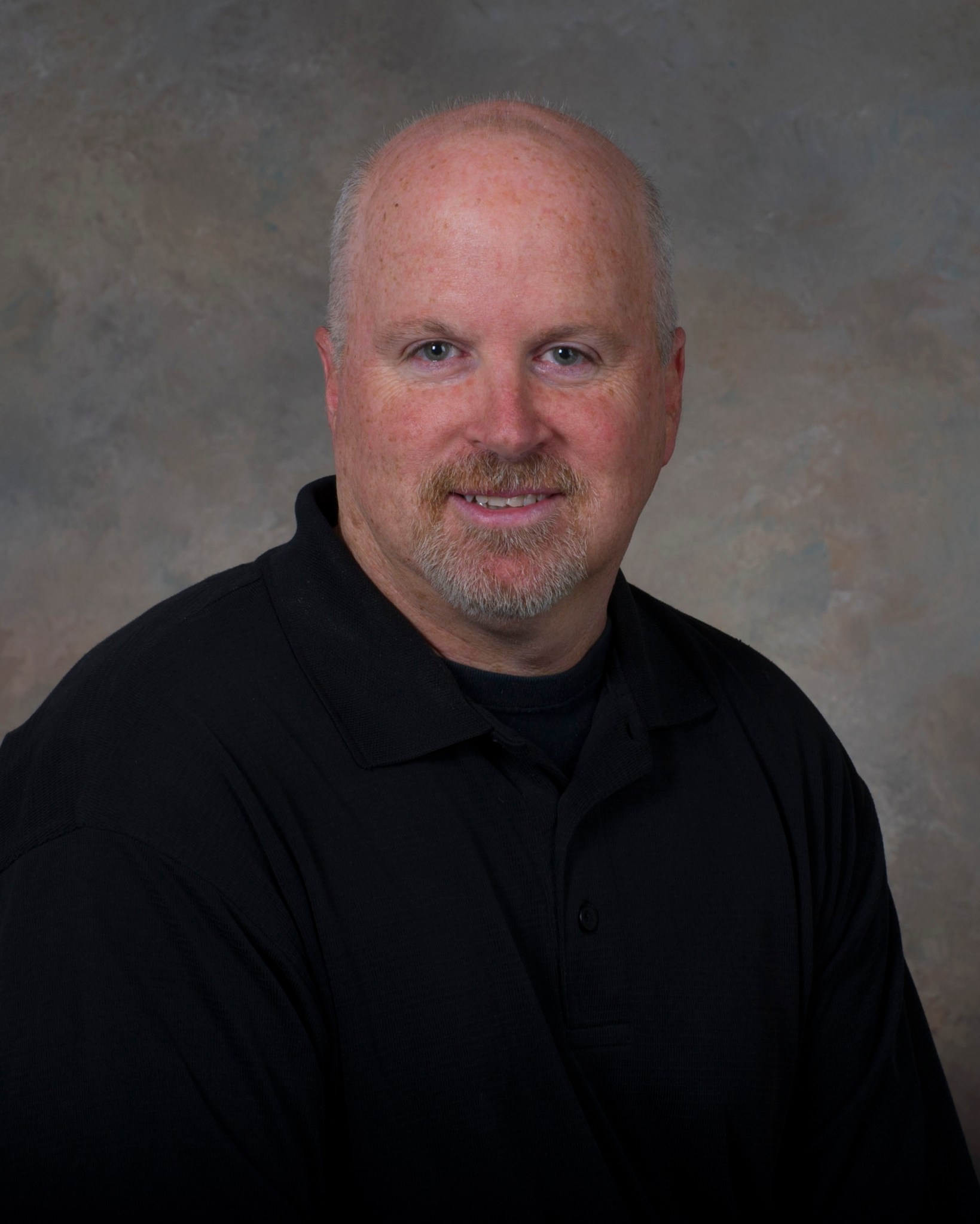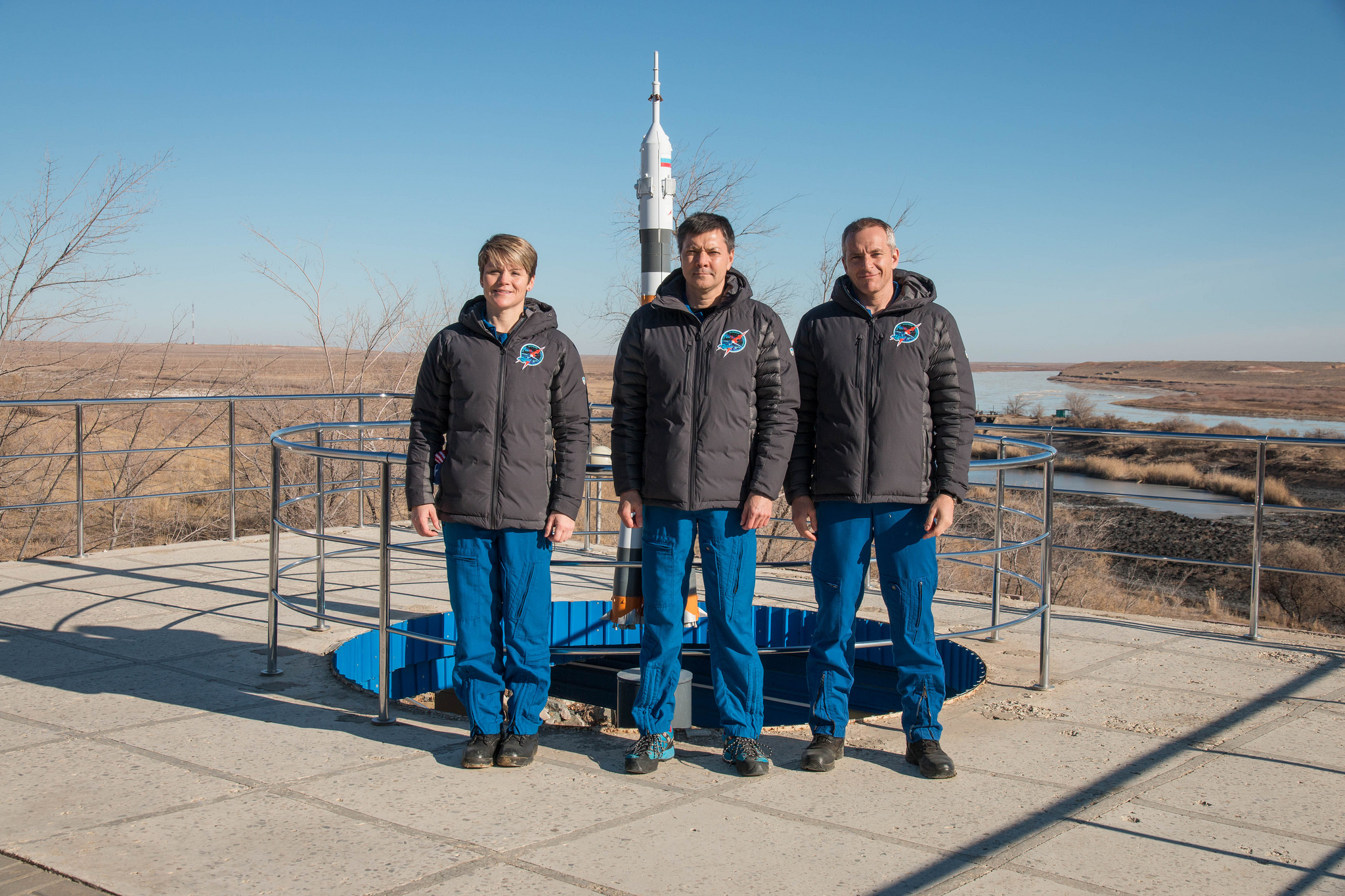In This Week’s Star
- NASA InSight Lander Arrives on Martian Surface to Learn What Lies Beneath
- Daniel Mullane Named SLS Chief Safety Officer
- Marshall Center Director Jody Singer to Hold All-hands Meeting Dec. 3
- Engineers Successfully Test Major Part of Orion Launch Abort System
- Huntsville Celebrates InSight’s Successful Landing
- Marshall Holiday Tree Lighting Ceremony Will be Held Dec. 3
- New Crew and Cargo Set for Space Station Expedition
- This Week in NASA History: First Extended-Duration Firing Test of the J-2 Engine – Nov. 27, 1963
NASA InSight Lander Arrives on Martian Surface to Learn What Lies Beneath
Mars has just received its newest robotic resident. NASA’s Interior Exploration using Seismic Investigations, Geodesy and Heat Transport – InSight — lander successfully touched down on the Red Planet after an almost seven-month, 300-million-mile journey from Earth.
InSight’s two-year mission will be to study the deep interior of Mars to learn how all celestial bodies with rocky surfaces, including Earth and the Moon, formed.
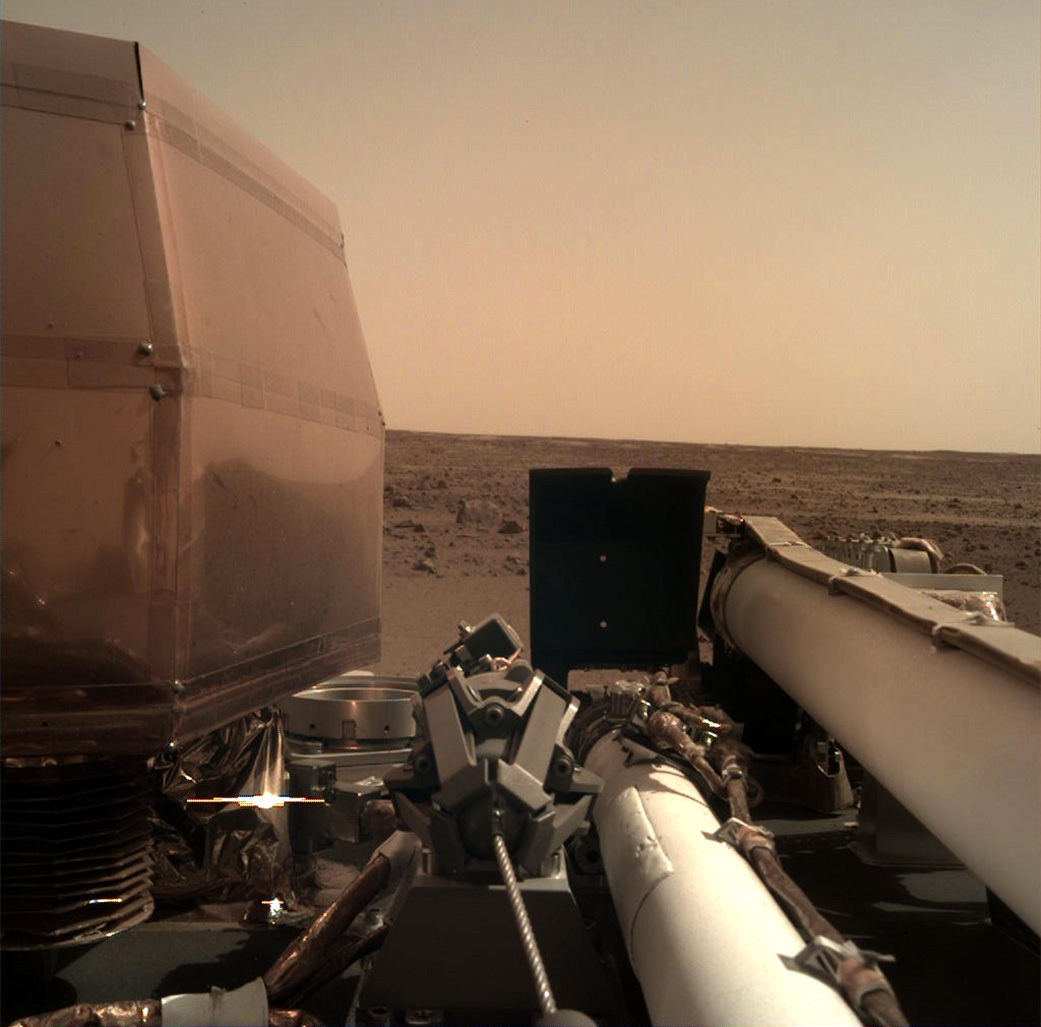
InSight launched from Vandenberg Air Force Base in California May 5. The lander touched down Nov. 26, near Mars’ equator on the western side of a flat, smooth expanse of lava called Elysium Planitia, with a signal affirming a completed landing sequence at 1:52 p.m. CST.
“Today, we successfully landed on Mars for the eighth time in human history,” said NASA Administrator Jim Bridenstine. “InSight will study the interior of Mars, and will teach us valuable science as we prepare to send astronauts to the Moon and later to Mars. This accomplishment represents the ingenuity of America and our international partners and it serves as a testament to the dedication and perseverance of our team. The best of NASA is yet to come, and it is coming soon.”
The landing signal was relayed to NASA’s Jet Propulsion Laboratory, via NASA’s two small experimental Mars Cube One — MarCO — CubeSats, which launched on the same rocket as InSight and followed the lander to Mars. They are the first CubeSats sent into deep space. After successfully carrying out a number of communications and in-flight navigation experiments, the twin MarCOs were set in position to receive transmissions during InSight’s entry, descent and landing.
Confirmation of a successful touchdown is not the end of the challenges of landing on the Red Planet. InSight’s surface-operations phase began a minute after touchdown. One of its first tasks was to deploy its two decagonal solar arrays, which will provide power.
InSight will begin to collect science data within the first week after landing, though the teams will focus mainly on preparing to set InSight’s instruments on the Martian ground. At least two days after touchdown, the engineering team will begin to deploy InSight’s 5.9-foot-long robotic arm so that it can take images of the landscape. InSight will operate on the surface for one Martian year, plus 40 Martian days, or sols, until Nov. 24, 2020. The mission objectives of the two small MarCOs, which relayed InSight’s telemetry, was completed after their Martian flyby.
JPL manages InSight for NASA’s Science Mission Directorate. InSight is part of NASA’s Discovery Program, managed by the agency’s Marshall Space Flight Center. The MarCO CubeSats were built and managed by JPL. Lockheed Martin Space in Denver built the InSight spacecraft, including its cruise stage and lander, and supports spacecraft operations for the mission.
Daniel Mullane Named SLS Chief Safety Officer
Daniel Mullane has been appointed to the Senior Executive Service position of Space Launch System chief safety officer in the Safety and Mission Assurance Directorate at NASA’s Marshall Space Flight Center. The Senior Executive Service is the personnel system covering top managerial positions in federal agencies.
Mullane will be responsible for managing and directing the safety program and mission and product assurance activities for the SLS Program.
He has been deputy SLS chief safety officer since 2010, assisting in leading multiple teams of engineers and quality inspectors in defining, planning and executing safety, reliability, quality assurance and software assurance activities for the SLS Program. From 2005 to 2010, he was chief safety officer for Constellation work assigned to Marshall, including development of the Ares I and V launch vehicles, the Launch Abort System and Ares I-X. In this position, he also served in a dual role as deputy chief safety officer for the Constellation Program and was on a special assignment as the Ares I-X chief safety officer, providing overall leadership of a cross-agency Safety and Mission and Assurance team for the Ares I-X mission.
Mullane became the space shuttle chief safety officer in 2004, providing overarching technical leadership to engineers and inspectors implementing SMA programs on the space shuttle projects assigned to Marshall, specifically the reusable solid rocket motor, solid rocket booster, external tank, and space shuttle main engine projects.
Mullane began his NASA career in 1991 as an engineer in the Safety and Mission Assurance Directorate. While in that position, he served in multiple roles, including shuttle reusable solid rocket motor Safety and Mission Assurance team lead, Payload Assurance team lead, and Space Station Freedom Program system safety engineering lead.
Prior to his NASA career, he worked as mechanical engineer for Ebasco Services at several sites in the commercial nuclear power industry and for the U.S. Army Armament Research & Development Command.
Mullane received a bachelor’s degree in mechanical engineering from Manhattan College in Riverdale, New York. He is the recipient of numerous honors and awards, including the NASA Exceptional Achievement Medal, the NASA Exceptional Service Medal, Center Director’s Commendation, program manager and mission manager commendations, and numerous group achievement awards.
Mullane and his wife, Lisa, live in Huntsville and have three children who reside in Tucson, Arizona, Huntsville and Birmingham.
Marshall Center Director Jody Singer to Hold All-hands Meeting Dec. 3
NASA Marshall Space Flight Center team members are encouraged to attend an all-hands meeting with Marshall Center Director Jody Singer at 1 p.m. Dec. 3 in Morris Auditorium, Building 4200. Singer will share highlights from the past year and discuss why inclusive, hands-on leadership is important to Marshall.
Marshall team members unable to attend may view the all-hands live on Marshall Desktop TV. Singer will answer questions from the audience and questions submitted by email. You may submit questions securely from any computer or mobile device starting now and throughout the meeting.
To submit a question:
- Go to https://www.nasa.gov/townhall
- Click on Marshall Space Flight Center
- Click “+ Ask” or, if your question is already on the list, vote it up the list by clicking the arrow on the left
Engineers Successfully Test Major Part of Orion Launch Abort System
By Jonathan Deal
A motor designed by Aerojet Rocketdyne for the Launch Abort System (LAS) on NASA’s Orion spacecraft was successfully tested by engineers recently at the U.S. Army Redstone Test Center on Redstone Arsenal.
During the Orion Launch Abort System Jettison Motor Qualification Motor-1 Hot-Fire Test, the motor produced more than 40,000 pounds of thrust, enough to lift 26 elephants off the ground. The 1.5-second test was the first in a round of tests aimed at qualifying the LAS Jettison Motor for human spaceflight in preparation for Exploration Mission-2.
The LAS is a safety mechanism for Orion that will launch atop NASA’s Space Launch System, which will carry crew to deep space missions. The Jettison Motor is a critical element for ensuring astronaut safety. The Launch Abort System will safely lift the Orion Crew Module away from the launch vehicle in the event of an emergency on the launch pad or during ascent. Once Orion reaches a safe distance from the rocket, the Orion Jettison Motor would ignite to separate the LAS structure from the spacecraft, which could then deploy its parachutes for a safe landing.
The Launch Abort System consists of three solid rocket motors: the Jettison Motor, the Abort Motor that pulls the Crew Module away from the launch vehicle, and the Attitude Control Motor used for steering to reorient the Crew Module’s position following an abort. A jettison motor will also be included in an upcoming test of the Launch Abort System, Ascent Abort 2.
The Jettison Motor was built by Aerojet Rocketdyne in Sacramento, California, for the Lockheed Martin-built Orion spacecraft’s Launch Abort System. The LAS is led out of NASA’s Langley Research Center in collaboration with NASA’s Marshall Space Flight Center.
Deal, an ASRC Federal/Analytical Services employee and Marshall Star editor, supports the Office of Strategic Analysis & Communications.
Huntsville Celebrates InSight’s Successful Landing
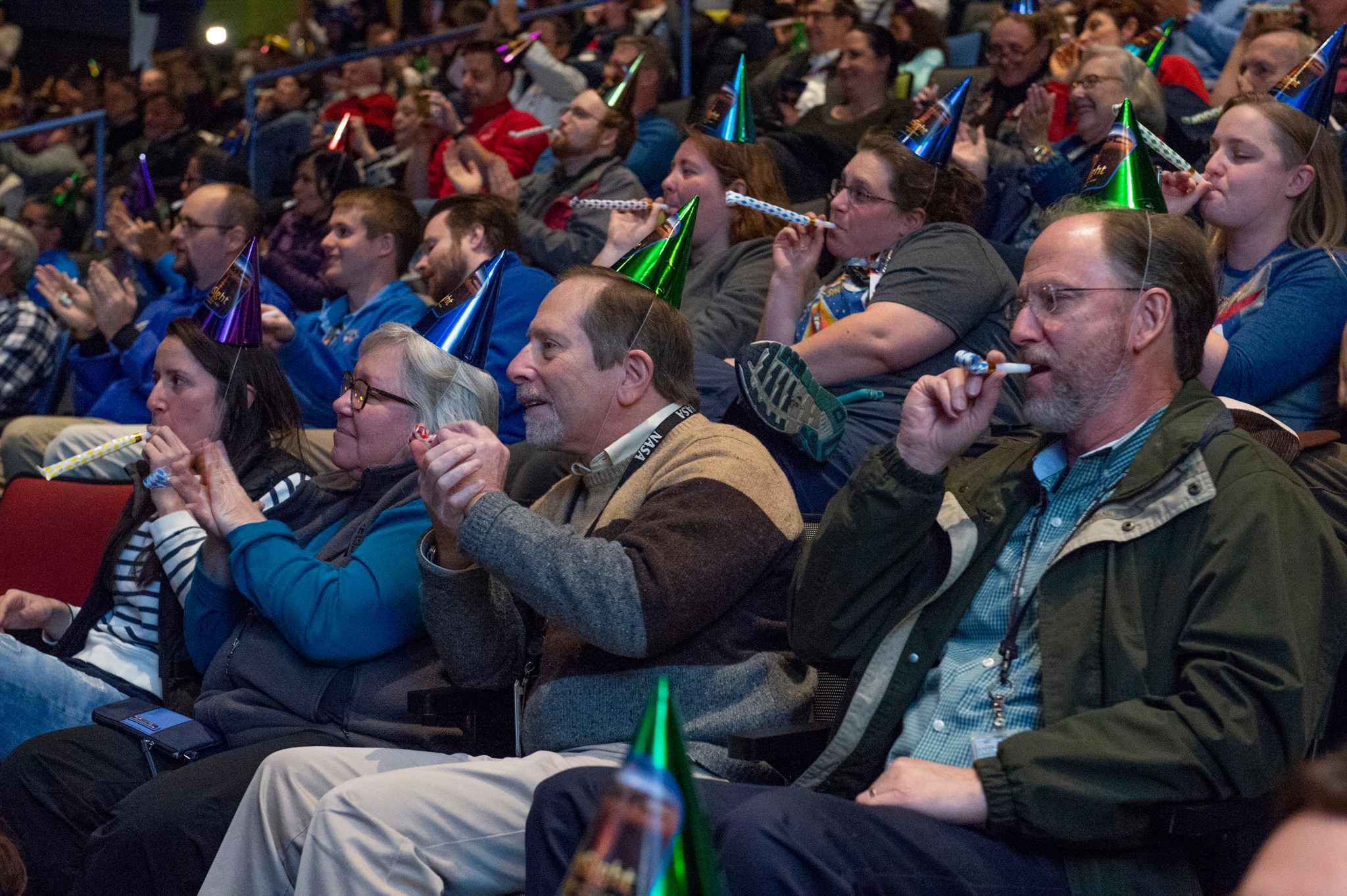
NASA Marshall Space Flight Center team members and members of the public filled the National Geographic Theater at the U.S. Space & Rocket Center Nov. 26 to watch NASA’s InSight lander successfully touch down on Mars. The InSight mission, managed out of Marshall through NASA’s Discovery Program, will use a seismometer and a suite of other instruments to study the Martian interior. The landing event featured a keynote talk from InSight team member Renee Weber, acting chief scientist at Marshall, along with hands-on Mars and solar system exploration activities from Marshall’s Academic Affairs Office and Planetary Missions Program Office. (NASA/Emmett Given)
Marshall Holiday Tree Lighting Ceremony Will be Held Dec. 3
The Marshall Exchange will host the NASA Marshall Space Flight Center Holiday Tree Lighting Ceremony Dec. 3 at 4:45 p.m. Family members are welcome to attend, as a visit from a very special guest is expected.
The free event will take place at the front terrace area of Building 4200. Marshall team members are invited to enjoy cookies and hot chocolate as children from the Marshall Child Development Center sing carols.
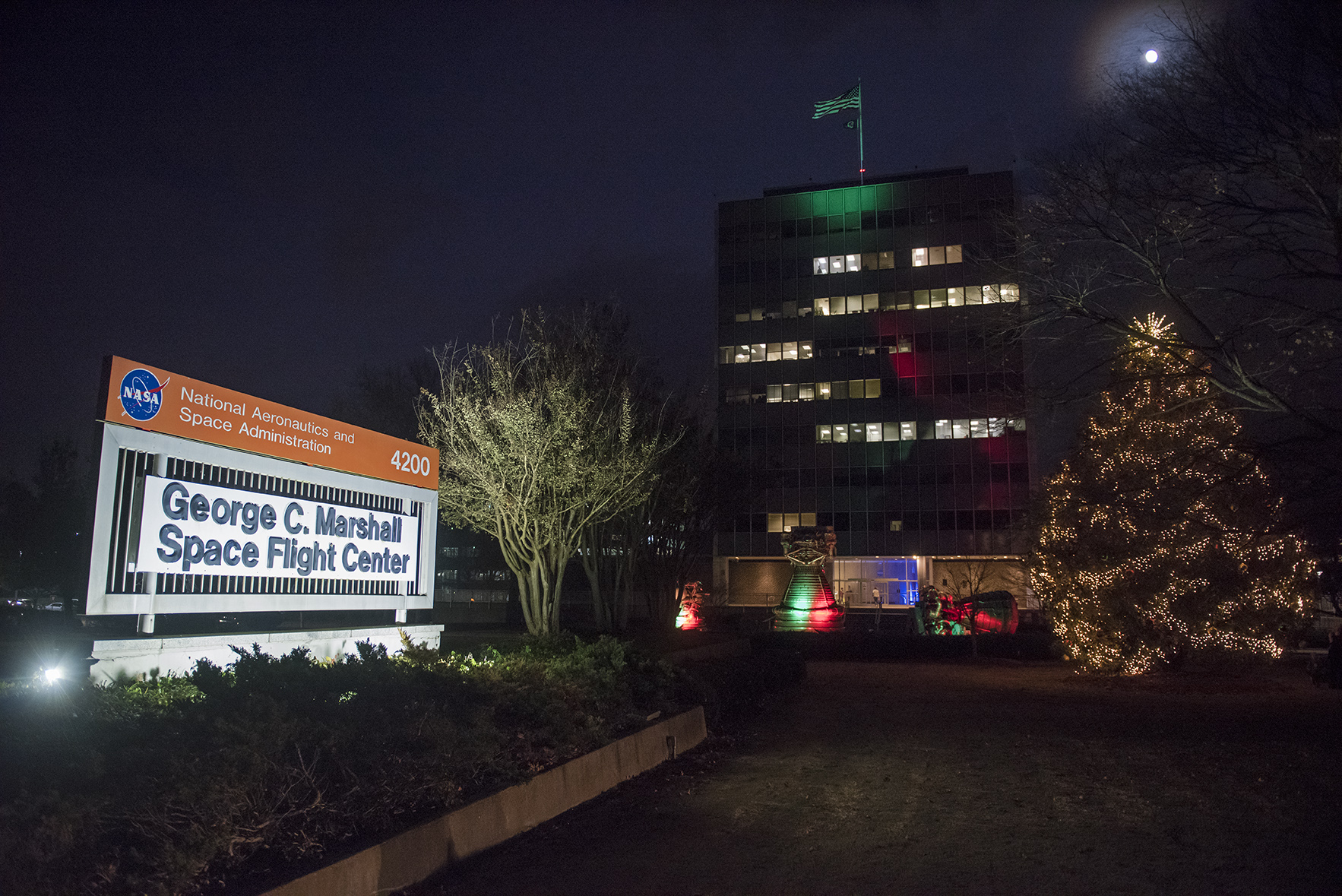
New Crew and Cargo Set for Space Station Expedition
Two rockets on the opposite sides of the world are poised to launch one day after another to replenish the International Space Station with a new crew and cargo.
On Dec. 3, three new Expedition 58 crew members are preparing to blast off to the space station on a Russian Soyuz crew ship. The following day, SpaceX will launch its Dragon cargo craft to the orbital lab atop a Falcon 9 rocket.
NASA astronaut Anne McClain, Canadian Space Agency astronaut David Saint-Jacques and veteran cosmonaut Oleg Kononenko will lift off in their Soyuz MS-11 spacecraft at 5:31 a.m. CST from the Baikonur Cosmodrome in Kazakhstan. About six hours later they will reach their new home in space and dock to the Poisk module beginning a six-and-a-half-month mission.
The SpaceX Dragon is targeted to begin its ascent to space from the launch pad at the Kennedy Space Center on Dec. 4. Dragon will orbit Earth for two days loaded with new science before it is captured with the station’s Canadarm2 and installed to the Harmony module.
This Week in NASA History: First Extended-Duration Firing Test of the J-2 Engine – Nov. 27, 1963
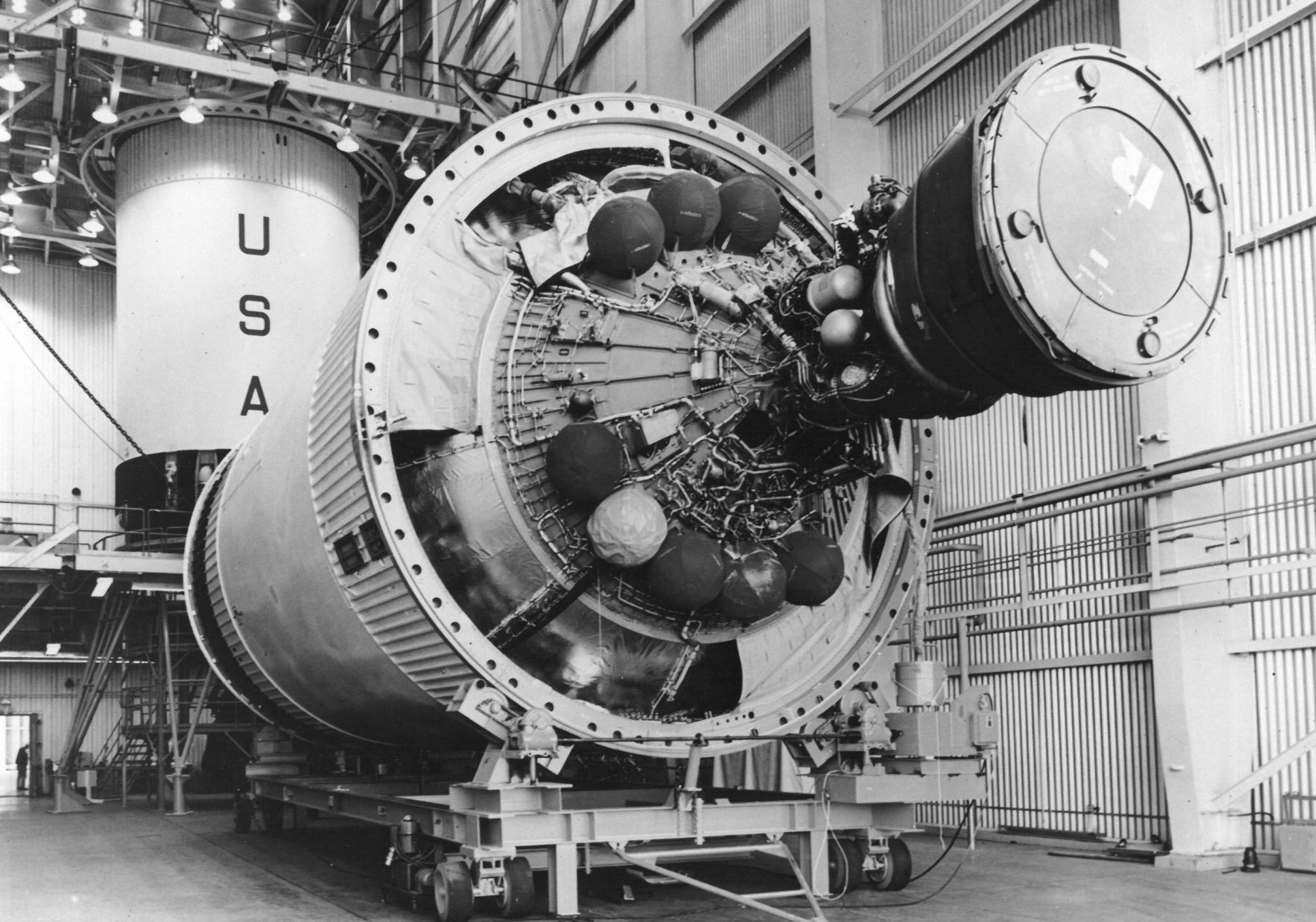
This week in 1963, the first extended-duration firing test of the J-2 engine was conducted by Rocketdyne of Los Angeles. The J-2 engine was developed by Rocketdyne under the direction of NASA’s Marshall Space Flight Center and was propelled by liquid hydrogen and liquid oxygen. A cluster of five J-2 engines powered the S-II stage of the Saturn rocket while a single J-2 was employed on the S-IVB, the third stage of the Saturn V. Here, the aft end of the Saturn V S-IVB stage rests on a transporter in the Manufacturing Facility at Marshall. NASA will mark the 50th anniversary of the Apollo Program from October 2018 through December 2022. The program landed a dozen astronauts on the Moon between July 1969 and December 1972, and the first U.S. crewed mission — Apollo 8 — that circumnavigated the Moon in December 1968. The NASA History Program is responsible for generating, disseminating, and preserving NASA’s remarkable history and providing a comprehensive understanding of the institutional, cultural, social, political, economic, technological and scientific aspects of NASA’s activities in aeronautics and space. For more pictures like this one and to connect to NASA’s history, visit the Marshall History Program’s webpage. (NASA)

